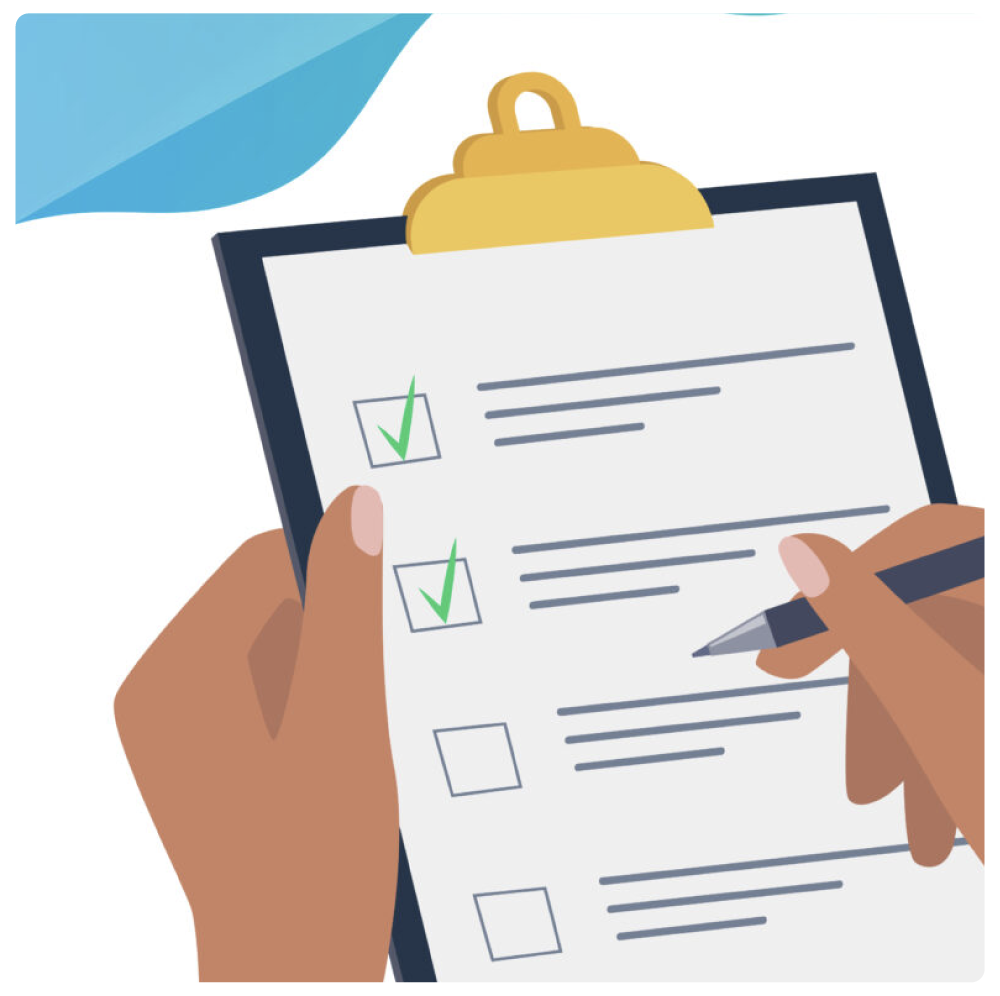How to verify leads: A guide for lead buyers

Lead buyers are the cornerstone of any successful lead generation strategy, but the work doesn’t stop once leads are acquired. To maximize ROI, increase conversion rates, and maintain compliance with evolving legal requirements, lead buyers must verify leads.
Keeping your leads accurate, compliant, and high-quality can mean the difference between wasted marketing dollars and thriving customer relationships. In this comprehensive guide, we’ll explore how to verify leads, why it’s critical for lead buyers, and the actionable steps you can take to implement robust lead verification processes.
With tools like LeadConduit and TrustedForm Verify, you can verify leads instantly, protect your business from compliance risks, and optimize the performance of your lead-generation campaigns.
What is lead verification?
Lead verification is the essential process of validating the accuracy, quality, and compliance of leads acquired from third-party vendors or internal marketing campaigns. This helps ensure that critical contact information—like phone numbers, email addresses, and physical addresses—is correct and that leads adhere to legal and regulatory requirements such as the Telephone Consumer Protection Act (TCPA) and Federal Communications Commission (FCC) consent standards before contact is made.
Why is lead verification important for lead buyers?
Effective lead verification does more than confirm data accuracy—it improves lead quality, bolsters compliance with regulations, reduces wasteful spending, safeguards your business from legal risks, and positions your company as a responsible industry leader.
1. Improved lead quality
Verification eliminates fake or incorrect contact information, keeping your sales team focused only on genuine prospects with high conversion potential.
2. Cost efficiency
By avoiding invalid or non-compliant leads, you save valuable marketing dollars that would otherwise go to waste. Every verified lead represents a smarter investment in your pipeline.
3. Legal compliance
With stringent regulations growing more restrictive by the year, it’s essential to have clear, documented consent from every lead you contact. Non-compliance can lead to severe financial penalties and legal repercussions.
However, achieving compliance extends beyond merely obtaining consent; it involves meticulous attention to lead validation, precise disclosure language, and robust record retention practices.
- Lead validation
Before initiating any contact, validating the authenticity and eligibility of a lead is crucial. This step helps maintain that your organization is not inadvertently engaging with individuals who have not provided valid consent or whose contact details are inaccurate.
Implementing rigorous lead validation protocols, such as cross-referencing data with reliable databases and using third-party verification services, can mitigate risks associated with contacting unqualified leads.
- Disclosure language
The language used in your disclosures plays a pivotal role in securing legally defensible consent. Regulatory bodies often scrutinize the clarity and completeness of disclosures, particularly in industries like finance, healthcare, and telecommunications. Disclosures must be written in plain, easily understandable language, free of legal jargon that could confuse consumers.
- Record retention
Even with validated leads and well-crafted disclosures, retaining comprehensive records is fundamental for demonstrating compliance during audits or legal disputes. Proper record retention policies should outline how long consent documentation is stored, how it is secured, and the format in which it is preserved.
These records should include time-stamped evidence of when and how consent was obtained, along with the exact language of the disclosures presented at the time.
4. Enhanced brand reputation
Verified leads help foster trust with prospects by reducing spammy interactions and improving communication accuracy. Businesses that prioritize lead quality signal credibility and professionalism, building stronger customer relationships over time.
Implementing a robust lead verification strategy isn’t just about protecting your business; it’s about creating a sustainable and effective foundation for all of your lead generation efforts.
How to verify leads: Best practices for lead buyers
Understanding how to verify leads is crucial to bolster data quality and compliance. What’s more, implementing a lead verification process doesn’t have to be complicated. Here are a few practical steps to help your company verify leads, achieve high-quality data, and maintain a robust compliance framework:
1. Verify leads instantly with LeadConduit add-ons
LeadConduit offers add-ons that integrate seamlessly with your lead acquisition processes and work in real time:
- Phone number verification: Confirm that phone numbers are active and can receive calls or texts, reducing the risk of unreachable/ non-compliant leads.
- Email verification: Check if email addresses are valid and capable of receiving messages, which helps maintain high deliverability rates.
- Address verification: Ensure physical addresses are accurate to prevent shipping or mailing errors. These tools help maintain data integrity right from the point of acquisition, ensuring you start with high-quality information.
These add-ons integrate seamlessly with LeadConduit, empowering businesses to validate leads as they enter the system, reducing the risk of wasting resources on invalid or incomplete data.
2. Scrub against known litigants
Litigation-prone leads can be a major liability. Scrubbing your leads against lists of known TCPA litigants helps prevent you from contacting individuals who frequently file lawsuits for non-compliance.
- LeadConduit’s litigant scrub feature: This tool identifies potential high-risk leads by cross-referencing them against a comprehensive database of known litigants, safeguarding your business from potential lawsuits.
3. Understand the importance of real-time disclosure validation
Implementing real-time TCPA disclosure verification is more than a regulatory necessity; it’s a strategic advantage. It not only shields your business from legal repercussions but also helps keep your marketing campaigns ethical, efficient, and customer-focused. Adopting automated solutions can streamline this process, enabling businesses to confidently generate leads while upholding industry standards.
4. Implementing lead verification software
Bringing lead verification software into your marketing stack isn’t complicated, but doing it right makes all the difference. Start by selecting a platform that fits your data sources, CRM, and compliance needs. Look for tools that verify email addresses, phone numbers, and demographic data in real-time. Once you’ve chosen a solution, integrate it with your lead capture forms and marketing automation tools. The goal is to screen out invalid, fake, or unqualified leads before they enter your pipeline.
A proper lead verification process goes beyond installing software. Set clear criteria for what qualifies as a valid lead, and make sure your team knows how to act on verification results. Automate as much as possible—flagging duplicates, scoring risk levels, or routing verified leads straight to sales. Don’t just collect data; use it to make smarter decisions, faster.
For teams looking to scale with confidence, TrustedForm Verify offers robust capabilities. It helps mitigate risk by digitally verifying that your prior express written consent requirements are met, enabling consistent, audit-ready compliance across all lead sources. It reduces manual errors, streamlines vendor oversight, and boosts productivity by automating time-consuming reviews.
With Verify, you can consolidate compliance data from multiple vendors and enforce standards efficiently, making your lead verification process not only faster but smarter.
Final thoughts
The process of learning how to verify leads is far from a superfluous task; it’s a strategic imperative for lead buyers striving to maximize ROI, enhance compliance, and build lasting customer relationships. In today’s fast-evolving regulatory environment, a robust lead verification strategy keeps your marketing efforts efficient, ethical, and effective. By leveraging tools like LeadConduit and TrustedForm Verify, you can validate lead quality in real time, safeguard your business from costly compliance risks, and position your company as a trusted industry leader.
The result? A streamlined, data-driven approach to lead generation that fuels sustainable growth, optimizes resources, and strengthens your brand reputation. Take the next step—invest in lead verification through the power of LeadConduit and TrustedForm Verify today to secure your business’s success tomorrow.
DISCLAIMER: This page and all related links are provided for general informational and educational purposes only and are not legal advice. ActiveProspect does not warrant or guarantee this information will provide you with legal protection or compliance. Please consult with your legal counsel for legal and compliance advice. You are responsible for using any ActiveProspect Services in a legally compliant manner pursuant to ActiveProspect’s Terms of Service. Any quotes contained herein belong to the person(s) quoted and do not necessarily represent the views and/or opinions of ActiveProspect.






